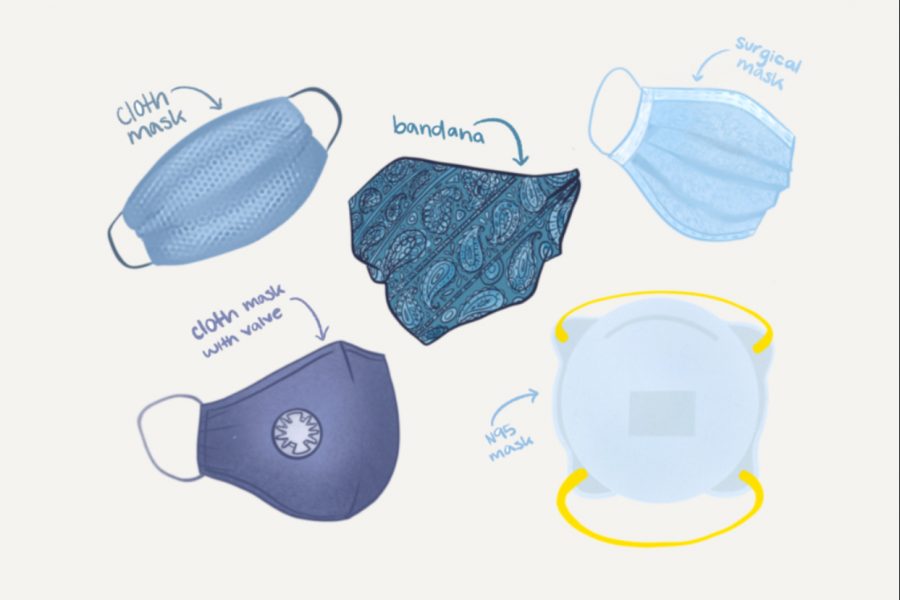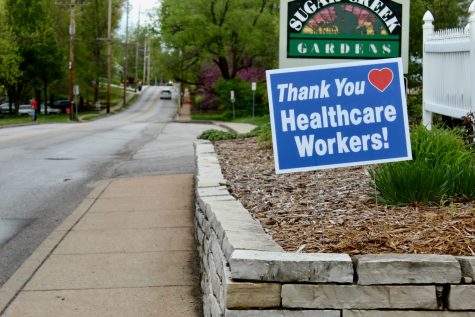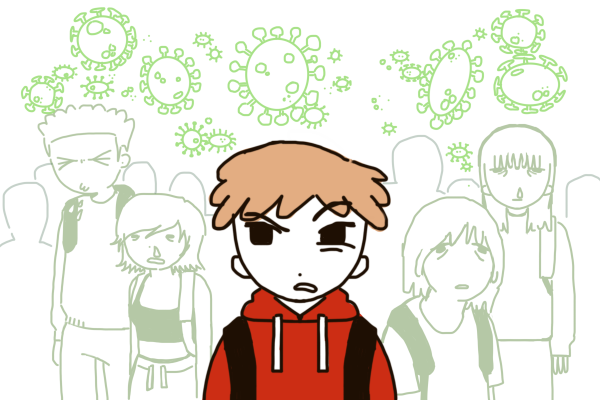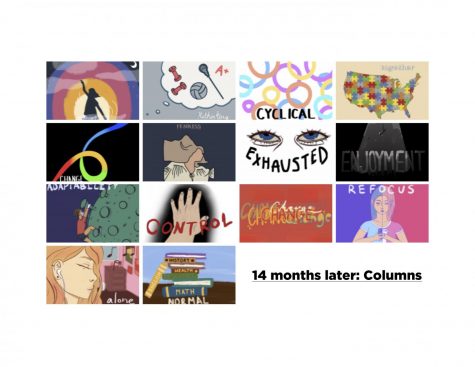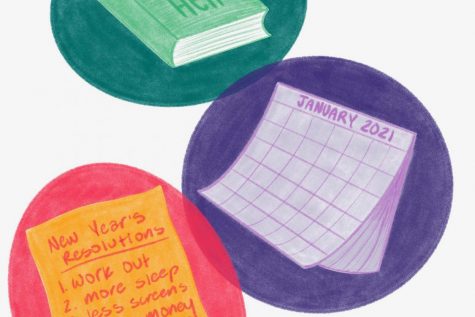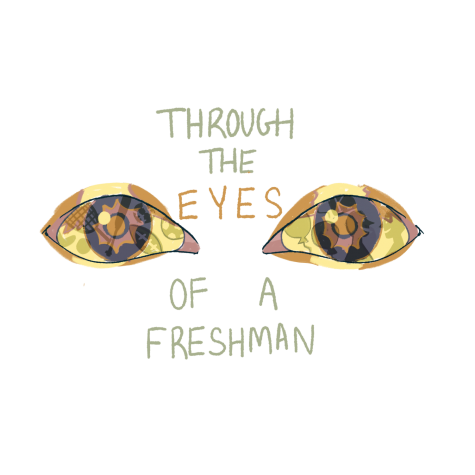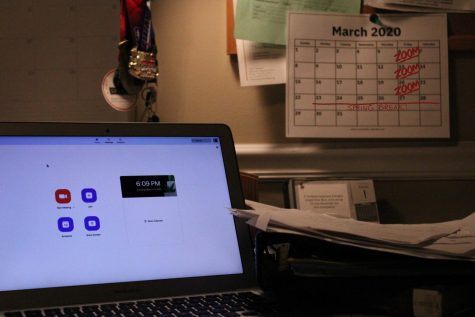Unmasking effectiveness
Face masks are considered effective in protecting against the coronavirus.
Since the beginning of the coronavirus pandemic, masks have become a prominent part of today’s world. The Centers for Disease Control (CDC) recommends they be worn in all public places because of their effectiveness in preventing the spread of COVID-19. Face coverings help contain respiratory droplets that could carry the virus spread through talking, breathing, coughing or sneezing. Since the pandemic began, many masks have been made, but not all are equally effective. Knowing which masks are most protective is important in slowing the spread of COVID-19, and this guide will determine how efficient the most popular masks are.
Cloth masks are a common choice for non-medical use. These masks are functional, but do not provide medical-grade protection. The more layers a mask has, the more effective it is. Cloth masks are also washable and reusable, making them more sustainable than single-use masks. KSD provided students and staff with masks made of a mesh-like material, but after being tested using a candle, they have proven to provide very little protection due to gaps in the fabric that allow air to get through. Similarly, some cloth masks have valves in them, but these only benefit the wearer. Valves make a mask more breathable, but in return, allow unfiltered air to escape, spreading infectious air to others. Face coverings including valves or vents are not allowed to be worn at school, per KSD guidelines.
The more layers a mask has, the more effective it is.
Bandannas were commonly worn at the start of the coronavirus pandemic because other types of masks weren’t available yet. Since then, they have been proven to create an insufficient barrier due to lack of tight fit around the chin, potentially allowing respiratory droplets to escape. Likewise, face shields, hard plastic attached to a headband, have a similar flaw. Used by medical professionals to protect their eyes, mouth and nose, face shields can also provide clarity in communication, because traditional masks can muffle sounds. Shields have openings around the sides, letting air spread, similar to bandannas. Plastic shields are optional, and not a replacement for wearing a mask. The CDC currently recommends a face shield to be worn with a regular mask.
Masks considered medical-grade are now worn by the general public, although higher quality masks are still suggested for use primarily in hospitals. Blue surgical masks are lightweight, breathable, disposable and provide an ample barrier, making them a popular choice. Even though they are thin, they filter out 60% of particles, and are therefore a suitable option for one-time use. N95 masks are also used in hospitals and defend against 95% of air particles. Since these masks provide leading protection, it is suggested that they are primarily used by healthcare professionals and first responders who frequently come into contact with COVID-19 positive patients.
Neck gaiters, or buffs, are worn around the neck to provide warmth, and more recently, have been used for protection against the virus. These coverings are often made of synthetic material, which is thin and supplies little defense. Some doctors say wearing a gaiter may be worse than no mask at all. Synthetic material aerosolizes respiratory droplets, making them smaller, and therefore linger in the air longer.
Some doctors say wearing a gaiter may be worse than no mask at all.
When shopping for a mask, or possibly making one, certain fabrics work better than others. According to the World Health Organization (WHO), cotton is considered the best choice, and multiple layers are suggested. If cotton isn’t available, make sure the fabric is tightly woven and doesn’t have any visible gaps.
Methods of testing the quality of a mask have been introduced, and include trying to blow out a candle with a mask on or holding a mask up toward a light. If a candle can be blown out or light appears through the mask, it isn’t very protective and should be worn with an added filter. Some masks have a built-in filter pocket, which allows filters to be placed between the mask and mouth. Filters can be bought in-store or online at retailers such as Target or Walmart, but common household paper products work as well, including coffee filters, paper towels, face tissues and toilet paper.
No matter the material, the barrier a mask provides will change depending on how it is worn. Making sure the mask covers the face from the bridge of the nose to under the chin delivers the most protection. Masks should be washed frequently, if possible, to kill virus particles on the mask. Face coverings are an essential part in stopping the spread of COVID-19, and knowing how effective they are can save lives.
Your donation will support the student journalists of Kirkwood High School. Your contribution will allow us to purchase equipment and cover our annual website hosting costs.

She/Her
Hobbies and Interests: hanging out with friends and family, walking my dog, reading, baking
Favorite song: Dive by Kid Cudi
Favorite...

She/Her
Hobbies and Interests: drawing, cooking, and true crime
Favorite song: too many to choose
Favorite Quote: "Venture outside your comfort...


